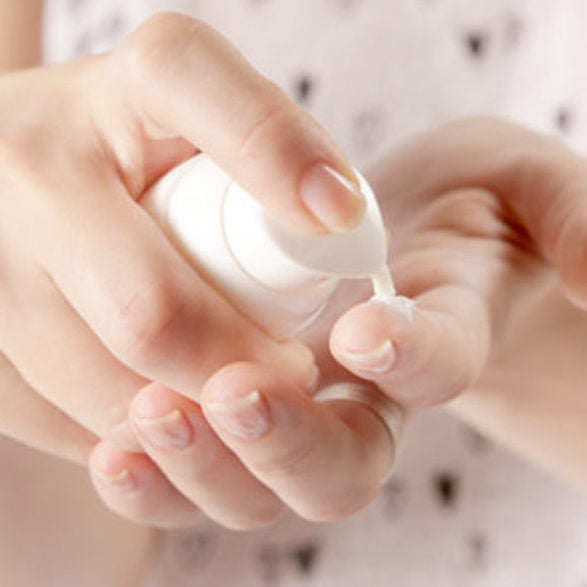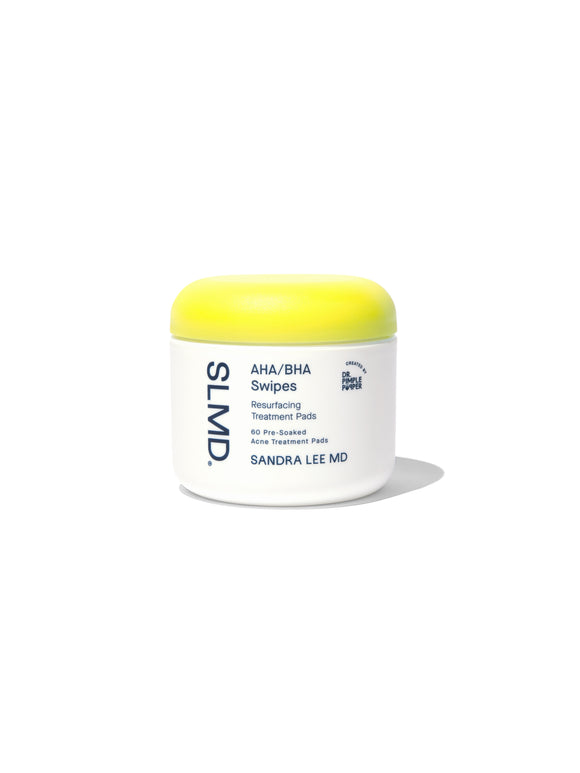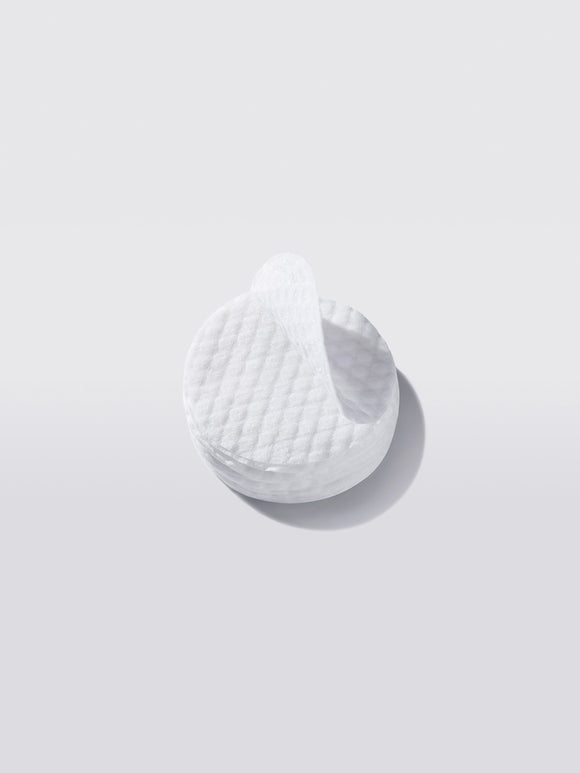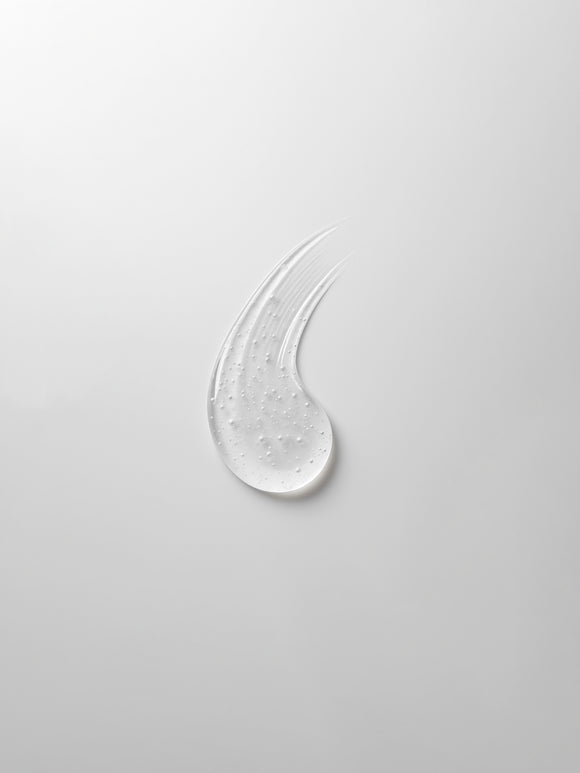
The Right Way to Layer Your Skincare
Dr. Pimple Popper's step-by-step guide to applying all your products in the correct order.
Published:
6 minute read
Serums, moisturizers and spot treatments, oh my! If you’re anything like us and have a full skincare/makeup cabinet, it can be intimidating to figure out how to incorporate your latest products into your routine. Turns out, the order you apply skincare does matter. Here, we outline the basic concepts to consider — followed by a step-by-step skincare layering guide, courtesy of dermatologist and SLMD Skincare founder, Sandra Lee, MD (aka Dr. Pimple Popper).
Top tips for effective skincare layering
Though each skincare routine is unique, there are some general guidelines for how to layer skincare products. Here’s a quick breakdown from Dr. Lee:
#1 Start with clean skin
Begin with a cleanser suitable for your skin type to remove makeup, dirt, and oil — no exceptions. This ensures your skin is clean and ready to absorb your skincare products.
#2 Apply thinnest to thickest
This is the golden rule of skincare layering: start with products that have a liquid consistency and work your way to thicker creams and ointments (see below for some tiny exceptions). This ensures that each layer is properly absorbed, allowing active ingredients to penetrate the skin effectively without being blocked by heavier products.
#3 Wait between layers
It’s generally a good idea to give each product a little bit of time (maybe thirty seconds to a minute) to absorb into the skin. This becomes particularly important when layering potent active ingredients.
#4 Keep spot treatments solo
Products designed to treat pimples with high concentrations of salicylic acid or benzoyl peroxide work best by themselves. Cleanse your skin, apply your spot treatment or pimple patch, and avoid the area when layering on your other skincare.
#5 Avoid overloading
Using too many skincare products (especially those containing potent active ingredients) can cause irritation and compromise your skin barrier. What’s more, some ingredients don’t always play well with others — which means you could actually be canceling out their beneficial effects. As Dr. Lee always says, keep it simple, and listen to your skin.
Dr. Pimple Popper’s step-by-step guide to layering skincare
With her cleanse, treat, moisturize routine, it’s no secret that Dr. Lee is a fan of simple skincare. But if you’ve got several goals — refining pores and minimizing dark spots, and treating occasional pimples, for example — here’s her advice for adding onto her famous 3-step regimen.
Step 1: Makeup remover
Whether you’ve got a face full of makeup or just a bit of highlighter and mascara, it’s crucial to remove your makeup before you cleanse. Depending on your preference, choose products ranging from micellar water to oil-based removers that gently yet thoroughly get the job done.

Step 2: Cleanser
Cleansing your skin is essential. Just like you wouldn’t get into a set of freshly washed sheets in dirty clothes, you should not apply skincare products to dirty skin. Over the course of the day, pollutants, dirt and oil accumulate on your face. So it’s important to wash that off at night prior to applying any other products before you go to sleep. A dime-sized dollop of your cleanser of choice is the perfect amount to remove the day’s dirt and grime without stripping your skin of natural oils or irritating your complexion.
Try: SLMD Salicylic Acid Cleanser — a favorite of Dr. Lee’s because it's gentle, yet great at exfoliating and unclogging pores.
Step 3: Spot treatment
Here’s where we break from the thinnest to thickest rule: now’s the time to apply a max-strength acne spot treatment to any pimples that you want to target. As previously mentioned, avoid layering any subsequent skincare products directly over the pimples you’re spot treating, so that you get maximum efficacy and penetration from your acne-fighting ingredients. This is especially true if you’re using acne patches, since any oils in your other products may diminish the patch’s contact with your pimple.
Dr. Pimple Popper's Spot Treatment Picks
Step 4: Toner
Whether you spritz, pat, or swipe on your toner, the benefits are numerous. Think of toner as the primer of your skincare routine, balancing and prepping your skin. Depending on their key ingredients like antioxidants or acids, toners can exfoliate, brighten, protect, and more. Apply toner by dispensing a small amount into your palm, or onto a soft cotton round, and patting or swiping onto your skin.

Step 5: Treatment serum, gel, lotion
This step is for your targeted solution(s): skin brighteners, leave-on exfoliants, antioxidants, enzymes, retinol, peptides, and the like. Typically, you only need a pearl-sized drop of your go-to treatment product — which should be gently applied in upward strokes until it’s fully absorbed. Again, go with the golden rule of thinnest to thickest: from serum to gel to lotion.
Make sure you do some research on your ingredients if you’re mixing more than one treatment product. For example, retinoids are best applied at night only, and not at the same time as benzoyl peroxide for acne. Some ingredients, like vitamin C and alpha hydroxy acids, work well together for some skin types, but can be too strong for others.
Dr. Lee always says, listen to your skin — and stick with only 1–2 treatments at a time. To address multiple concerns, like dark spots and fine lines, you can try alternating treatment products in a morning/evening or every other day frequency.
Dr. Pimple Popper's Skincare Treatment Picks
Advice from Dr. Lee for layering skincare with acne
If you have active acne, this is the time to apply your treatment — whether it’s a serum, gel, or lotion. That’s because you don’t want any other ingredients to counteract those actives (like benzoyl peroxide or sulfur) in your acne treatment. You also want to avoid layering oils or emollients (like you’d find in moisturizers) before acne treatments, because they could interfere with the treatment’s absorption.
Until your acne is under control, it’s best to stick to your acne treatment products and follow up with lightweight moisturizer (skip to Step 7). Once your skin clears, you can follow these guidelines to introduce new products to address additional skin concerns.
Try: SLMD Acne System, an easy, complete routine for treating and preventing acne.
Step 6: Hydrating serum/gel
After applying a treatment product, now is the time to apply a hydrating serum, if needed. Look for ingredients like hyaluronic acid, glycerin, and beta glucan, which are humectants, meaning they attract and hold water within the skin. This has a plumping effect and helps impart a dewy, youthful glow. Another advantage of hydrating serums is that they can help offset irritation from potent treatments, like retinol, exfoliants, and vitamin C, says Dr. Lee.
Dr. Pimple Popper's Hydratiing & Moisturizing Picks

Step 7: Moisturizer
Finally, it’s time to seal it all in! Once you’ve let your previously-applied products settle into your skin, apply a nickel-sized amount of your favorite moisturizer. According to Dr. Lee, even those with oily or acne-prone skin need a non comedogenic moisturizer, to help keep skin balanced and to protect the skin barrier from transepidermal water loss (TEWL).
Step 8: Protect
Dr. Lee says that besides cleanser, sunscreen is the most essential step in your routine — so make sure your daily moisturizer is equipped with broad-spectrum protection that’s lightweight, so it won’t clog pores (which will exacerbate acne).
Try: SLMD Daily Moisturizer with SPF 15, with soothing vitamin E.

Dr. Lee's Last Word
How to layer skincare is one of the most common questions I get. It can be really confusing, I know, but the most basic rule of thumb is to go from your thinnest to your thickest products after cleansing. Don’t layer too many treatments on at once, and definitely don’t forget to top it off with moisturizer and sunscreen!



































